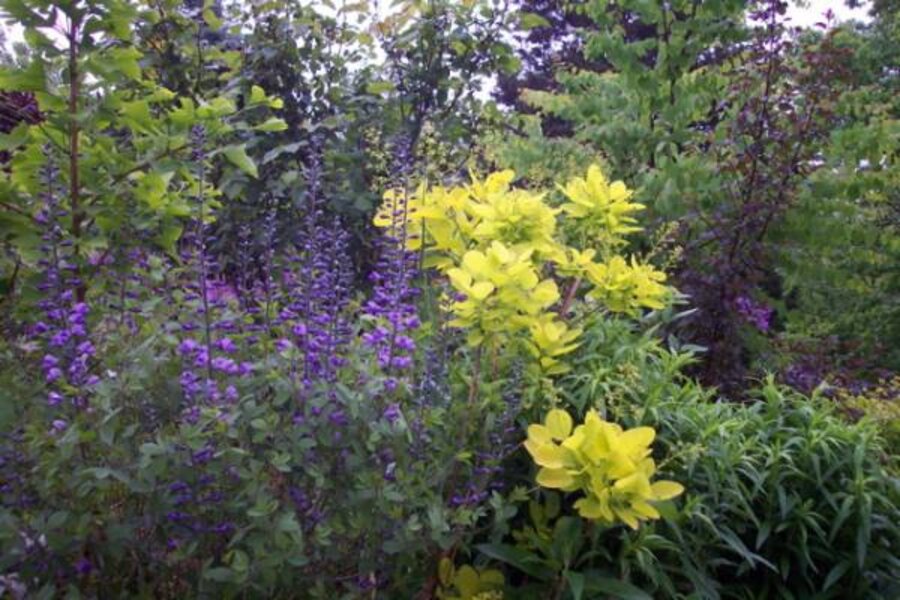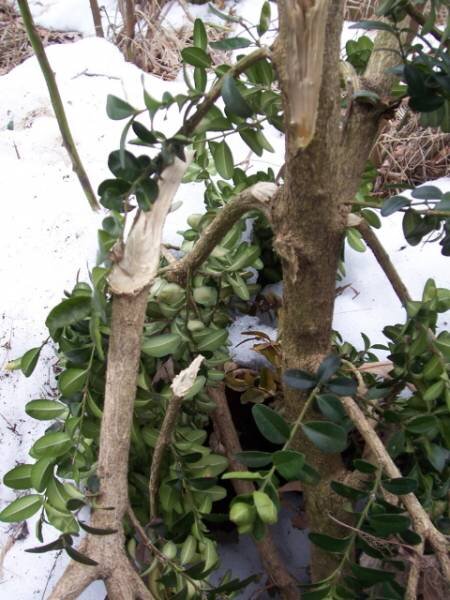Pruning shrubs and trees: Making gains by cutting back
Loading...
If the snow was a memory and I could walk around without slipping and sliding, I would be pruning shrubs and trees right now.
To me, pruning is such an captivating pastime that I seem to end up in a wonderful trance and forget where I am or what time it is and just look for the next crossing branch. Experience has taught me to approach this activity with some caution.
Once I was pruning a young cherry tree, trying to develop a nice scaffold of branches, when I decided I need to step back to look at the big picture. I forgot I was on a ladder.
March is a good time for those of us in the mid-Atlantic states to prune most woody plants that are not spring bloomers.
Spring bloomers should be pruned right after flowering in the spring unless your heart is made of stone and you don’t want to see perky forsythia, quirky quince, vivacious viburnums, cute kerria, or majestic magnolia. And after flowering, don’t forget to cut some of the old wood out of your lilac and bring it down in height so you can smell the wonderful lilac fragrance.
Pruning can create great puzzlement or a devil-may-care sense among the clan of non-gardeners, and while it can be difficult to remember all the pruning rules for clematis varieties, shrubs are pretty straightforward:
They either bloom in the spring and can be pruned right afterward, or they flower on "new wood" (new stems or branches that grow this year) and can be pruned now. [Click here for a list of when and how to prune some common trees and shrubs. And click here [pdf] if you live in Zone 7 or south.]
The reason you don't want to dilly-dally about pruning spring-flowering shrubs is that the spring bloomers will be setting their next year's flower buds in June and July, and if you wait till then to trim, the shrub won't produce any flowers the next spring.
Shrubs that bloom on new wood include lavender, common sage, santolina, butterfly bush, blue mist shrub (Caryopteris), beautyberry (Callicarpa), most roses, some hydrangeas (arborescens and paniculata), vitex, and rose of Sharon.
Most of these shrubs benefit from pruning out winter damage and crossing branches, as well as reducing their size. I want to see the butterflies that sip from my butterfly bush. If it's 15 feet tall, I won’t see them.
This is not a good time to prune roses [pdf]. Roses are cut back pretty severely in my yard, and I don’t want bitter temperatures to descend after pruning and kill any remaining tissue. So I let roses wait until some real warm air appears and the bushes start to leaf out. Diseased, dead, damaged stems get removed as well as stems that head into the center of the bush. (Note: A few roses bloom on last year’s wood, like many heirlooms and the New Dawn climber. So – prune them after blooming.)
Many evergreen plants can be pruned now as they are going to be coming out of dormancy soon and will begin to grow again. Boxwood can wait until late April to be pruned.
Cleaning up winter damage will be important this year. Cracked and broken branches can be pruned out carefully and most plants will recover well. Cut back to a leaf node rather than leaving a stump and your plants will be happier. Step back frequently to see how well balanced the remaining branches are. And stay off that ladder.
Donna Williamson is one of nine garden writers who blog weekly at Diggin' It. She's a master gardener, garden designer, and garden coach. She has taught gardening and design classes at the State Arboretum of Virginia, Oatlands in Leesburg, and Shenandoah University. She’s also the founder and editor of Grandiflora Mid-Atlantic Gardening magazine, and the author of “The Virginia Gardener’s Companion: An Insider’s Guide to Low Maintenance Gardening in Virginia.” She lives in the Shenandoah Valley of Virginia.
-----
Follow us on Twitter and Facebook.
To read more by Donna, click here. The Monitor’s main gardening page offers articles on many gardening topics. Access all our blog posts here (keep scrolling down to read more), If you don't want to miss any of our gardening coverage, consider subscribing to the RSS feed of the gardening page and the RSS feed of Diggin' It. Do visit Gardening With the Monitor on Flickr. Take part in the discussions and get answers to your gardening questions. If you join the group (it’s free), you can upload your garden photos and enter our next contest.







